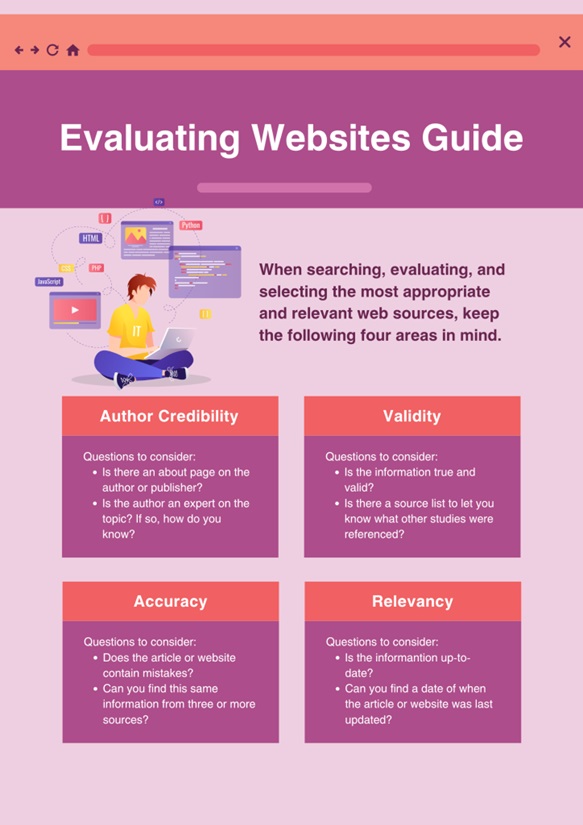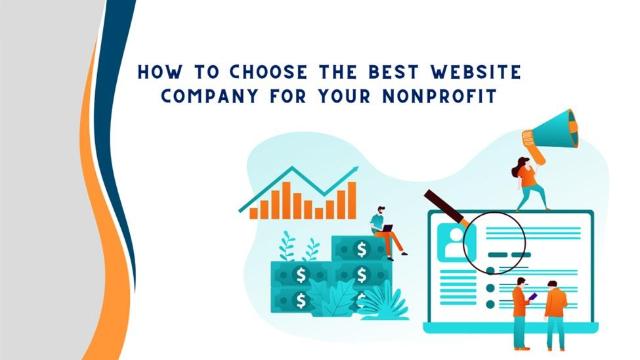How to Choose the Best Website Company for Your Nonprofit
In today’s digital age, a nonprofit’s website is often the first point of contact for potential donors, volunteers, and beneficiaries. With 94% of consumers forming their first impression of an organization based on its website design, choosing the right website company for your nonprofit is crucial for success.
This blog will walk you through the process of selecting the best website company to bring your nonprofit's mission to life online. We'll cover everything from understanding your needs to finalizing contracts, ensuring you make an informed decision that aligns with your organization's goals.
Understanding Your Needs and Goals
Before you search for the perfect website company, it's crucial to have a clear understanding of what you want to achieve with your nonprofit's website. This foundational step will guide you through choosing the right partner.
Evaluate Your Current Website
First, take a good look at your current website (if you have one). Honestly assess what's working and what isn't. Before you start redesigning, ask yourself these questions:

- What aspects of the current site work well?
- Which areas need improvement?
- How does it compare to other nonprofit websites you admire?
Also, think about the user experience from the viewpoint of your different stakeholders like donors, volunteers, beneficiaries, and staff. Is the site easy to navigate? Does the content convey your mission and impact?
Use analytics tools to collect data on how your current website is performing. Check metrics like page views, bounce rates, and conversion rates. This information can help you identify areas that need improvement.
Consider Your Resources and Expertise
When planning your website, it's important to assess your organization's technical capabilities and available resources. This will help you decide whether to opt for a custom-built website or use a website builder platform.
- Evaluate your team's technical skills
- Consider your budget for both initial development and ongoing maintenance
- Assess your timeline for getting the website up and running
For many nonprofits, especially those with limited technical expertise or tight budgets, using the best website builder for nonprofits can be an excellent solution. These platforms often offer user-friendly interfaces and nonprofit-specific features that can get you online quickly and efficiently.
Define Clear Objectives
With a solid understanding of your current position, it's time to look forward. What specific goals do you want your new website to achieve? These objectives should align with your overall organizational strategy.
Common goals for nonprofit websites include increasing online donations, improving user engagement, enhancing volunteer recruitment, and streamlining event registration. However, your goals should be tailored to your unique mission and challenges.
Make your objectives SMART goals: Specific, Measurable, Achievable, Relevant, and Time-bound. For example, instead of increasing donations, aim to increase online donations within the first six months after launch.
Identify Must-Have Functionalities
Now that you have clear goals, list the essential features your website needs to support your nonprofit's mission. Consider the tools and features that will help you achieve your objectives. Consider functionalities like:
- A secure and user-friendly donation processing system
- A volunteer management system for easy sign-up and scheduling
- An event calendar with registration capabilities
- A blog or news section to share updates and stories
- Email newsletter sign-up to grow your mailing list
- Social media integration for broader reach
Remember, while adding every possible feature is tempting, you better stick to what's truly needed. A simple website with core functions usually performs better than one that's cluttered with rarely-used features.
Researching Potential Website Companies
With your needs and goals clearly defined, it's time to start researching website companies that specialize in nonprofit web design. This crucial step will help you find potential partners who can realize your digital vision.
Create a List of Potential Partners
Begin by compiling a list of website companies with experience working with nonprofits. There are several ways to build this list:
- Ask for recommendations from other nonprofits in your network. Personal referrals can provide valuable insights into a company's work ethic and results.
- Search online using keywords like "nonprofit website design companies" or "web developers for charities." This can help you discover companies that specifically market their services to the nonprofit sector.
- Check industry forums and social media groups dedicated to nonprofit technology. These platforms often have discussions about website development and can be a great source of recommendations.
- Attend nonprofit technology conferences or webinars. These events can introduce you to companies specializing in the nonprofit sector and allow you to see their work firsthand.
Examine Portfolios and Case Studies
Once you have a list of potential companies, dive deep into their portfolios and case studies. This will give you a clear picture of their capabilities and style:
- Look for websites that are visually appealing and align with current design trends. Pay attention to how well the designs reflect each organization's brand and mission.
- Explore the websites they have built to see if they include the features you need, such as donation systems, event calendars, or volunteer sign-up forms..
- Navigate through their portfolio sites as if you were a visitor. Is the experience smooth and intuitive? This can give you an idea of how user-friendly your site might be.
- Many nonprofit websites are now optimized for mobile. Make sure the company's portfolio includes mobile-responsive designs. Test their sample sites on different devices to ensure consistency.
Read Client Testimonials and Reviews
Client feedback can provide invaluable insights into what it's like to work with a particular company:
- Look for testimonials on the company’s website and seek independent reviews on platforms like Google My Business or other industry-specific review sites.
- Pay attention to comments about the company's reliability, communication style, and ability to meet deadlines. These factors can be just as important as their technical skills.
- If possible, reach out to some of their past nonprofit clients directly. Many organizations are willing to share their experiences and can offer a more candid perspective.
By carefully researching potential web design companies using these strategies, you'll be ready to choose a few candidates who have the skills, experience, and values to build a great website for your nonprofit. This thorough vetting process helps ensure a successful partnership and, in the end, a website that effectively supports your mission.
Key Considerations for Selection
When evaluating potential website companies, several factors should guide your decision:
- Cost vs. Value: While budget constraints are important, focus on the long-term value rather than just the initial price tag. Consider the potential return on investment, including increased donations and enhanced engagement. Look for scalable solutions that can grow with your organization.
- Support and Maintenance: A website is an ongoing commitment. Ensure the company provides robust support, including regular updates, security patches, and responsive technical assistance. This ongoing care is crucial for keeping your site secure and functioning optimally.
- Customizability: Seek a balance between a unique design that reflects your brand and a user-friendly content management system. Your website should be distinctive yet easy for your team to update and manage independently.
- Integration Capabilities: Your website should seamlessly integrate with other tools you use, such as donor management systems, email marketing platforms, and social media. This integration can streamline your operations and improve overall efficiency.
- Performance and Security: Fast loading times and mobile optimization are critical for user engagement. Equally important are strong security measures to protect your data and your donors' information. Prioritize companies that emphasize these aspects in their proposals.
By carefully considering these factors, you can select a website company that not only builds an attractive site but also provides a robust, secure, and efficient digital platform for your nonprofit's mission.
Evaluating Proposals and Engaging with Vendors
Once you've shortlisted potential website companies, it's time to engage with them directly. Request detailed proposals that outline the project timeline, cost breakdown, specific deliverables, and ongoing support.
During interactions, evaluate how well they understand your nonprofit's mission, their ability to translate your vision into a concrete plan, and their responsiveness and clarity in communication.
Consider whether the company supports content strategy, as 76% of nonprofit organizations use content marketing tactics. Discuss how the website company can support your content strategy, noting that 87% of nonprofit content marketers post articles to their website.
Making the Decision
With proposals in hand and vendor interactions complete, it's time to make your final decision. Use a weighted decision matrix to objectively compare your options by listing your criteria (e.g., cost, experience, support), assigning a weight to each criterion, rating each company on each criterion, and calculating total scores.
Consider long-term value by thinking beyond the initial build: will the website scale with your organization, how easy will it be to update and maintain, and what ongoing costs should you anticipate?
Seventy-two percent of nonprofit content marketers cite website traffic as one of the most important metrics, so ensure that your chosen company can provide robust analytics to track your site’s performance.
Final Steps and Contract Finalization
Once you've selected your website company, take these final steps to solidify the partnership:
- Negotiate terms and pricing
- Clarify project timelines and milestones
- Define clear expectations for both parties
- Ensure the contract allows for future flexibility
Since 84% of nonprofits have an SSL certificate, ensure your contract includes essential security measures Discuss backup procedures, update policies, and any additional security features specific to your needs.
Conclusion
Remember, your website is more than just a digital brochure; it’s a powerful tool for engagement and fundraising. With nonprofits averaging 12,708 website visitors per month and 0.23% of organic visitors making donations, a well-designed website can create a major impact for your organization.
Take an active role throughout the design process, communicate clearly with your chosen website company, and stay focused on your nonprofit's goals. With the right partnership, your new website will effectively showcase your mission and drive meaningful engagement with your supporters.
FAQs
How long does it take to build a nonprofit website?
The timeline can vary widely depending on the website’s complexity and the company’s schedule Generally, it can range from 4-8 weeks for a simple site to 3-6 months for a more complex, custom-built website. Discuss timeline expectations with potential website companies at the outset..
Can we switch website companies after our site is built if we're not satisfied?
While it's possible to switch website companies after your site is built, it can be costly and time-consuming. It's best to choose carefully initially and ensure good communication and clear contract terms to avoid needing to switch later. If you do need to switch, ensure your contract gives you full ownership of your website's content and design.
Should you use a website builder or hire a custom web development company?
The choice depends on your nonprofit's specific needs, budget, and in-house capabilities. Custom web development companies provide solutions and can handle complex functionalities but at a higher cost. Consider your long-term goals and the level of customization you need when making this decision.

